#Norma Beardsley
Explore tagged Tumblr posts
Text

Bad movie I have The Booby Hatch 1976 aka The Liberation of Cherry Janowski
#The Booby Hatch#Sharon Joy Miller#Rudy Ricci#Doug Sortino#N. Detroit#David Emge#John Upson#Dana Christian#Herb Elliotte#Mike Waterkotte#Allan Harris#Glenda Rozzo#Norma Beardsley#Andrew Banas#Diane Pugh#Lucian White#Debbie Lasagna#Lee Campbell#Mike Kent#George Kosana#Nick Kazalas#Bill Fleming#Raymond Laine#John A. Russo#Russell Streiner
6 notes
·
View notes
Text
Míos, tuyos y nuestros [2005]
Frank Berdsley (Dennis Quaid) se encuentra por casualidad con Helen North (Rene russo), su novia del instituto, treinta años después. Los dos están divorciados y tienen ocho y diez hijos respectivamente. Cuando deciden casarse, algunos de sus hijos intentarán sabotear sus planes de boda. Además, los hijos de Frank y Helen son tan distintos que no congenian: los Beardsleys son disciplinados y respetan las normas, pero no hay normas para los revoltosos y rebeldes Norths. Read the full article
0 notes
Text
Míos, tuyos y nuestros [2005]
Frank Berdsley (Dennis Quaid) se encuentra por casualidad con Helen North (Rene russo), su novia del instituto, treinta años después. Los dos están divorciados y tienen ocho y diez hijos respectivamente. Cuando deciden casarse, algunos de sus hijos intentarán sabotear sus planes de boda. Además, los hijos de Frank y Helen son tan distintos que no congenian: los Beardsleys son disciplinados y respetan las normas, pero no hay normas para los revoltosos y rebeldes Norths. Read the full article
0 notes
Text
Míos, tuyos y nuestros [2005]
Frank Berdsley (Dennis Quaid) se encuentra por casualidad con Helen North (Rene russo), su novia del instituto, treinta años después. Los dos están divorciados y tienen ocho y diez hijos respectivamente. Cuando deciden casarse, algunos de sus hijos intentarán sabotear sus planes de boda. Además, los hijos de Frank y Helen son tan distintos que no congenian: los Beardsleys son disciplinados y respetan las normas, pero no hay normas para los revoltosos y rebeldes Norths. Read the full article
0 notes
Text
Míos, tuyos y nuestros [2005]
Frank Berdsley (Dennis Quaid) se encuentra por casualidad con Helen North (Rene russo), su novia del instituto, treinta años después. Los dos están divorciados y tienen ocho y diez hijos respectivamente. Cuando deciden casarse, algunos de sus hijos intentarán sabotear sus planes de boda. Además, los hijos de Frank y Helen son tan distintos que no congenian: los Beardsleys son disciplinados y respetan las normas, pero no hay normas para los revoltosos y rebeldes Norths. Read the full article
0 notes
Text
Míos, tuyos y nuestros [2005]
Frank Berdsley (Dennis Quaid) se encuentra por casualidad con Helen North (Rene russo), su novia del instituto, treinta años después. Los dos están divorciados y tienen ocho y diez hijos respectivamente. Cuando deciden casarse, algunos de sus hijos intentarán sabotear sus planes de boda. Además, los hijos de Frank y Helen son tan distintos que no congenian: los Beardsleys son disciplinados y respetan las normas, pero no hay normas para los revoltosos y rebeldes Norths. Read the full article
0 notes
Text
Míos, tuyos y nuestros [2005]
Frank Berdsley (Dennis Quaid) se encuentra por casualidad con Helen North (Rene russo), su novia del instituto, treinta años después. Los dos están divorciados y tienen ocho y diez hijos respectivamente. Cuando deciden casarse, algunos de sus hijos intentarán sabotear sus planes de boda. Además, los hijos de Frank y Helen son tan distintos que no congenian: los Beardsleys son disciplinados y respetan las normas, pero no hay normas para los revoltosos y rebeldes Norths. Read the full article
0 notes
Text
Míos, tuyos y nuestros [2005]
Frank Berdsley (Dennis Quaid) se encuentra por casualidad con Helen North (Rene russo), su novia del instituto, treinta años después. Los dos están divorciados y tienen ocho y diez hijos respectivamente. Cuando deciden casarse, algunos de sus hijos intentarán sabotear sus planes de boda. Además, los hijos de Frank y Helen son tan distintos que no congenian: los Beardsleys son disciplinados y respetan las normas, pero no hay normas para los revoltosos y rebeldes Norths. Read the full article
0 notes
Text
Míos, tuyos y nuestros [2005]
Frank Berdsley (Dennis Quaid) se encuentra por casualidad con Helen North (Rene russo), su novia del instituto, treinta años después. Los dos están divorciados y tienen ocho y diez hijos respectivamente. Cuando deciden casarse, algunos de sus hijos intentarán sabotear sus planes de boda. Además, los hijos de Frank y Helen son tan distintos que no congenian: los Beardsleys son disciplinados y respetan las normas, pero no hay normas para los revoltosos y rebeldes Norths. Read the full article
0 notes
Text
Míos, tuyos y nuestros [2005]
Frank Berdsley (Dennis Quaid) se encuentra por casualidad con Helen North (Rene russo), su novia del instituto, treinta años después. Los dos están divorciados y tienen ocho y diez hijos respectivamente. Cuando deciden casarse, algunos de sus hijos intentarán sabotear sus planes de boda. Además, los hijos de Frank y Helen son tan distintos que no congenian: los Beardsleys son disciplinados y respetan las normas, pero no hay normas para los revoltosos y rebeldes Norths. Read the full article
0 notes
Text
Míos, tuyos y nuestros [2005]
Frank Berdsley (Dennis Quaid) se encuentra por casualidad con Helen North (Rene russo), su novia del instituto, treinta años después. Los dos están divorciados y tienen ocho y diez hijos respectivamente. Cuando deciden casarse, algunos de sus hijos intentarán sabotear sus planes de boda. Además, los hijos de Frank y Helen son tan distintos que no congenian: los Beardsleys son disciplinados y respetan las normas, pero no hay normas para los revoltosos y rebeldes Norths. Read the full article
0 notes
Text
Míos, tuyos y nuestros [2005]
Frank Berdsley (Dennis Quaid) se encuentra por casualidad con Helen North (Rene russo), su novia del instituto, treinta años después. Los dos están divorciados y tienen ocho y diez hijos respectivamente. Cuando deciden casarse, algunos de sus hijos intentarán sabotear sus planes de boda. Además, los hijos de Frank y Helen son tan distintos que no congenian: los Beardsleys son disciplinados y respetan las normas, pero no hay normas para los revoltosos y rebeldes Norths. Read the full article
0 notes
Photo
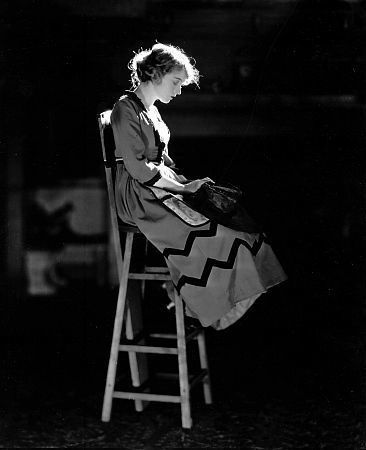
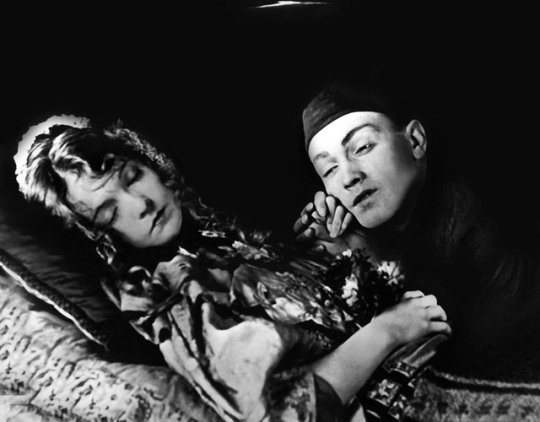

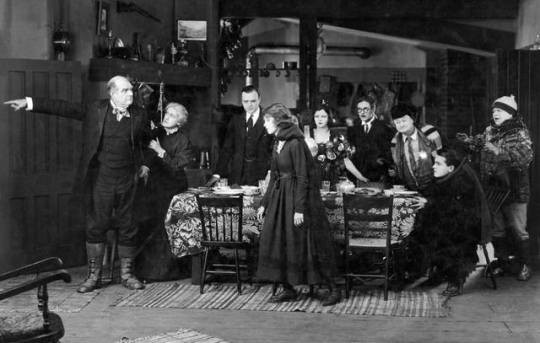

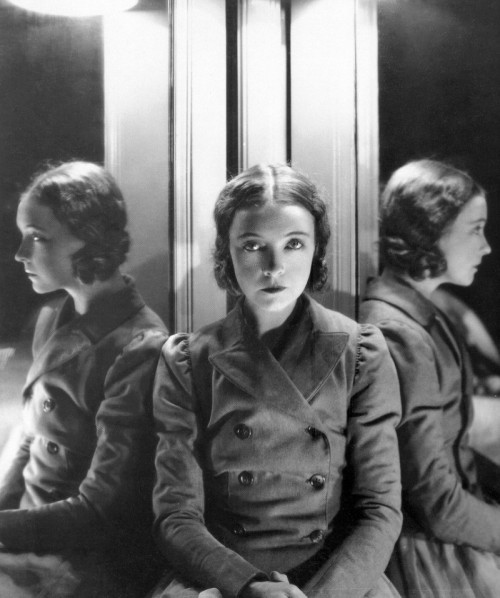
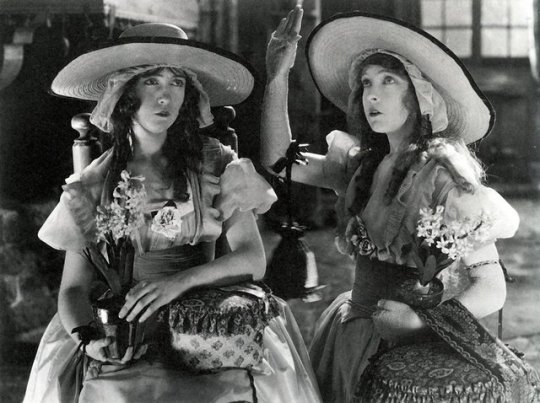
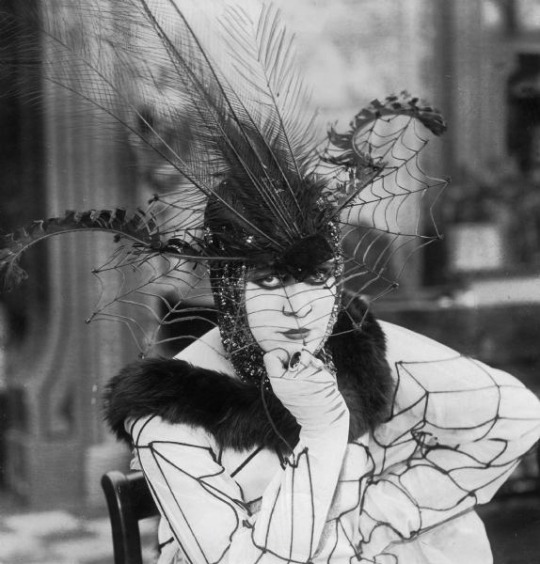
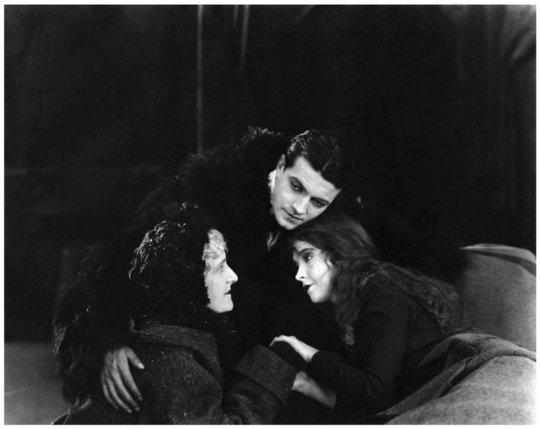
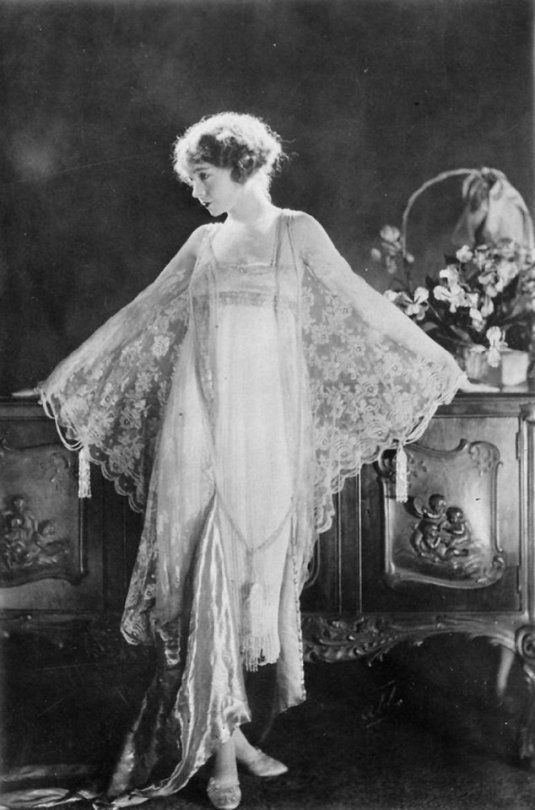
Silence A Silent-Screen Overview: Part 2.
Completing this journey across the period when the images were strong and meaningful enough to leave no space for the need of auditory input, the overview will start from 1916 and will continue up to 1929, although the last pieces that are mentioned regard 1936. Following the highlights of the years mentioned and gradually observing the replacement of the purity in emotion with the exaggeration in its portrayal, the swan song of the cinematographic naivety will be discreetly mentioned as well.
1916: D.W. Griffith’s second large scale production after “the Birth of a Nation”, is “Intolerance” with the out-of-space Lillian Gish and the rare persona of Douglas Fairbanks, which undoubtedly made 1916 an essential cinematographic year. What contributed to this, is the ongoing success of Mary Pickford, whose pictures were even distributed by the Artcraft Picture Corporation. Moreover, it is now that Charles Chaplin is considered the highest priced film star in the industry, after having signed with the Mutual Film Corporation. “Sherlock Holmes” with William Gillette is signed by Essanay this year, Norma Talmadge stars in “Going Straight” and Triangle releases the Fine art production of the Shakespearean “Macbeth”.
1917: Important contributions to the history of the silent screen were made in 1917, including the first all-colour feature film “A Tale of Two Nations” and the Williamson Brothers’ “The Submarine Eye” due to its underwater scenes. The charismatic director and storyteller Herbert Brenon made his exceptional “The Fall of the Romanoffs” this year and the Mack Sennett “Keystone Comedies” were released, including the “Bathing Beauties” as a means to cheer up the World War soldiers. Despite the cinematographic quality of the following films, what is also a contribution of this year, is the alluring costume creation, all evident on Theda Bara, throughout all her performances, as for instance in “Cleopatra”, “Camille”, “Du Barry”, “Cigarette”, as well as on Valeska Surratt and Virginia Pearson. Although the serial days were almost over, the “Seven Deadly Sins”, “Patria” with the astonishing Irene Castle and the “Mystery Ship” were created this year.
1918-1919: The war was gradually having greater influence on the film production. 1918 may be called the year of Propaganda, which is obvious through “Lafayette, We Come”, “To Hell with the Kaiser”, “The Beast of Berlin”, even Griffith’s “Hearts of the World”. What basically relates these two years when it comes to the practical matters of film production, is the combination of firstly the downturn that important colosseums of production were taking (like Vitagraph and Pathe) and secondly, the meaningful handling of Adolph Zukor. Zukor, whose philosophy was that important actors should reinforce through their fame the success of the film, did his best to keep in the game the corporations he participated into. During that, important movies were released like “Les Miserables” with William Farnum, “The Danger Game”, “Captain Kidd Junior”, “The Sheriff’s Son”. Moreover, essential Griffith creations were “The Girl Who Stayed at Home” and the unforgettable “Broken Blossoms” where Lillian Gish, an abused by her father daughter, is taken care by a Chinese immigrant, (the unbelievably expressive and eloquent Richard Barthelmess) something which ended up having even worse social effects on her. Many actors were given contracts from the newly established corporations, among them was the talented Nazimova (who stars in “The Red Latern”, “Out of the Fog” and “The Brat” this year), Gloria Swanson (staring in “For Better for Worse”, “Male and Female”) who were to considerably affect the world scenes.
1920-1921: The United Artists Corporation was now created, by the four most important names in the pictures: Mary Pickford, Douglas Fairbanks, D.W. Griffith and Charles Chaplin. Another highlight of the year, was the random discovery of Jackie Coogan by Chaplin, who played “The Kid” and became a star immediately. 1920 may be called the year of the great talent discoveries, because apart from Coogan, the actress Pola Negri and the director Ernst Lubitsch were bought into attention after Griffith’s “Way Down East” and “Passion”. Similarly, an outstanding talent discovery of the next year is that of Rudolph Valentino who gets the full attention of the audiences through his performance in “The Four Horsemen of Apocalypse”, “The Conquering Power” and “the Sheik”. Two radically different productions of 1921 that worth mentioning, are the ultra sensual “Camille” with Nazimova and Valentino and the purely naive “Coincidence” with June Walker and Robert Harron. Other than that, after the success of “Passion”, there were plenty German productions that managed to hit the box office, among them my personal favourites are “The Cabinet of Dr.Caligari” and “Deception”.
1922: If it can be stated that there has been a year where experiments took place before the silent screen, then 1922 is undoubtedly that. The charismatic Mexican dancer Ramon Samanyagos who changed his name to Ramon Navarro, performed outstandingly for “The Prisoner of Zenda” and Robert J. Flaherty’s “Nanook of the North” is categorised among the very first documentaries of all times. That indicates how even history can be narrated by the simplicity yet mastery of the bodily movement. Moreover, Nazimova’s “Salome” whose sets were based on the drawings of Beardsley can be evaluated as an artistic orgasm, although it was not a box-office success. Since theatricality was boosted even further through Salome, Marion Davies continued to create her extravagant elaborate costume pictures and D.W. Griffith did a remake of the “Two Orphans” as “Orphans of the Storm” which was even more expressive and complete than before, and where Lillian and Dorothy Gish’s stills can be easily mixed up with black and white paintings.
1923: Greta Gustafsson or Greta Garbo: The name that was to shake and reshape the film history, firstly appeared this year, and this is probably enough to mention. Her performance in “The Atonement of Gösta Berling” was followed the same year by “The Hunchback of Notre Dam”, where it is made clear that the weird make-ups and genres are what fit her fine. Other than that, the heartrending Pola Negri, after her feature in “Bella Donna” justifiably becomes the only honest rival of Gloria Swanson. Despite the wide film production of the year, what may count as an essential contribution to the film evolution, is Fritz Lang’s “Siegfried”, due to its flawless photography which although inspired and was referred to in movies some decades later, had a direct effect on Chaplin’s “A Woman of Paris”, in the same year.
1924-1925: The public demand for big pictures made only the large-scale efforts of these two years to be appreciated by the audience. This indicated that it was all about the survival of the “bigger”. On 1924 such syllogism is proven right through the success of Fairbanks’ “The Thief of Bagdad”, Pickford’s “Dorothy Vernon of Haddon Hall”, Davies’ “Yolanda” and “Janice Meredith”, Griffith’s “America” and First National’s “The Sea Hawk”. Similarly, on 1925 it was basically “The Phantom of the Opera” with the brilliant oddity of Lon Chaney, Chaplin’s “The Gold Rush”, “Stella Dallas” and the astonishing “Last Laugh” by F.W. Murnau which is considered as the most complete and perfect film ever made, as it didn't even have descriptive subtitles.
1926 and the gradual death of silence: The beginning of the end of the silent screen was signalled by the creation of the Vitaphone, bought by the Warner Brothers, to reproduce sound after being synchronised with the film projector. The first trial of the Vitaphone was through “Don Juan” with Barrymore, followed by the “Jazz Singer” with Al Jolson the year after. Apart from that, with the colour process called technicolour Fairbanks created his film “The Black Pirate”, slowly bringing about another indicator of the end of the silent screen as it was known. “Ben Hur” and “Variety” were the aesthetically highlights of this year, together with the sealed stardom of Gary Cooper and Greta Garbo.
1927-1929: During 1927 and probably due to the increasing technical support, the standards of success were reshaped. Yet, a reminder of the straightforward mastery of the silent screen is “It” with Clara Bow, when “It” became synonymous with sex appeal and for a short time the constructed needs for technical evolution, were forgotten. Step by step, the “talkies” came to replace the silent pieces: dialogues were more often added and musical backgrounds were more and more synchronised to the motion. “Abie’s Irish Rose” was a “part-talkie” movie, followed by “Our Modern Maidens”, “The Kiss”, even “Wild Orchids”. Silent screen actors started taking voice lessons and by the end of 1929 the majority of the theatres and production companies were “wired for sound”. The farewell to the art through which everything was fully expressed even without the help of words, were given by Charles Chaplin through his “City Lights” and “Modern Times”, as the last silent but dignified cry for the simplicity of communication.
This overview was not to glorify the characteristics of the film-period mentioned, as if those could apply to the needs of the present. Instead, by observing the gradual evolution of the cinematographic genres, the themes that were more common, and the standards that were set through the specific types of performance, it was made clear that, back then, when the technical means of impression-making were lacking, the strength that the actual feeling was having, stripped down to its simplest form and expressed by the abilities of the body, was what really mattered. It is probably a massive collection of films to watch, but in case any of the readers decides to give some a try, then the question that can be thought over is: If the technical means that are now used for the impression- and atmosphere making, affect the complexity of the feeling portrayed, what is sacrificed so that for that feeling to still seem the same?
By Marianna Serveta Photos taken from the British Film Institute Gallery, no rights infringement intended.
8 notes
·
View notes
Text
compare:
Yet he was always playing with the thought, indeed he could not escape it. For though religion was without foundation it was also without limit and promised a complete escape from earth into dizzy, unexplored altitudes.
Joris-Karl Huysmans, Là-Bas
I thought again of Huysmans, of the sufferings and doubts of his conversion, and of his desperate desire to be part of a religion.
Michel Houellebecq, Soumission
“to be part of a religion” – the connotations are clear. to be a part, within something larger; to dissolve into a greater whole; to have a place. this is not only different from the appeal of religion sketched by Huysmans himself, it is absolutely antithetical. “escape”: separation from a larger whole, to move from within to without; “dizzy”: vertigo, uncertainty of position; “unexplored”: solitude, isolation. this is perhaps the clearest evidence for the suspicion I had reading Soumission that Houellebecq/’s character had not only misunderstood Huysmans, but had understood him to mean precisely the opposite of what he so consistently represented. (in fairness, Houellebecq does note the contrast between Huysmans’ gothicism & the romanesque, communal ideal his narrator is drawn to, which only makes it all the more puzzling that he then implicitly conflates the two throughout most of the rest of the book. that Huysmans deliberately changed his name from the french/latin ‘Charles-Marie-Georges’ to the dutch/germanic ‘Joris-Karl’ should have made it clear where his sympathies lay.)
there are two factions within those drawn to Catholicism, or rather, Catholicism exerts two opposing attractions on those receptive to its appeal. for the one party, the Church is an escape: from the mundane, from the social, from the humiliations and limitations of organic existence. this is the party of the poets, and of the decadents (the Devil’s party, perhaps): Huysmans certainly, Baudelaire, Barbey d’Aurevilly, Villiers de l'Isle-Adam, Machen, Beardsley, Wilde, Cioran (in his devotion to the saints). if these ever seem nostalgic, it is to be understood not as a desire to re-enter or re-inhabit some foregone social arrangements, but as a desire for further extraction, or ecstasy – to escape the confines of their time (already you can see where confusion arises).
(a surprisingly close metaphor that has stuck with me for some time: the scene in Sunset Boulevard where Joe goes into the drug store to buy cigarettes for Norma; he meets Betty and Artie, romantic interest and social companionship, having a milkshake; they try to engage him in work, in his career, in this or that undertaking, until Max, dressed in black, appears at the door to call him in a foreign accent back out into the night, where waits the vampire Norma, still-fascinating relic of bygone glamour and power, in her lavish, anachronistic, Italian-made Isotta-Fraschini. “Not one of the those cheap new things made of chromium and spit.”)
for the other party, the Church is primarily an anchor, a guarantor of stability, place, and meaning. it provides both a sanctification of a (threatened) human ecosystem and a guarantee of its importance, extending the boundaries of the social to the limits of reality, crowding out any conceivable outside and cutting off all routes of escape. this is the party of ‘traditionalists’, but also the position of mainstream Catholicism since the beginning of the twentieth century at least (I strongly suspect that Jacques Maritain epitomized this tendency): the world is not to be withdrawn from, but to be lived in and engaged with.
just as the decadents are not without their moments of romantic nostalgia, others, like Houellebecq, who belong to the other side, are not without their moments of nausea at the stupidity of the human ecosystem and the individual’s subordination within it; and perhaps the genius of the Church has been to transmute the one desire to serve the ends of the other. ultimately, however, there is no room for compromise. for the ‘traditionalists’, escape must be prevented, because “to find ways out, is to let the Outside in.”
#I realize it's a bit silly to base this on individual words in translations#but again it's only the clearest evidence of a pervasive suspicion#tw long post#catholicism#michel houellebecq#soumission#joris karl huysmans#là-bas#religion#t
8 notes
·
View notes
Photo

Aubrey Beardsley morreu há 120 anos, com apenas 25. Ele escandalizou as normas Vitorianas de sua época e revolucionou as artes gráficas com as suas ousadas ilustraçôes para a peça 'Salomé' de Oscar Wilde. Aubrey Beardsley died 120 years ago today, at only 25, having scandalized Victorian gender norms and revolutionized the graphic arts with his daring illustrations for Oscar Wilde's "Salome" https://t.co/eP78KOgLe5 https://t.co/opvNIeTF8b #aubreybeardsley #salome #artesgraficas #graphicarts #oscarwilde #victoriantimes
0 notes